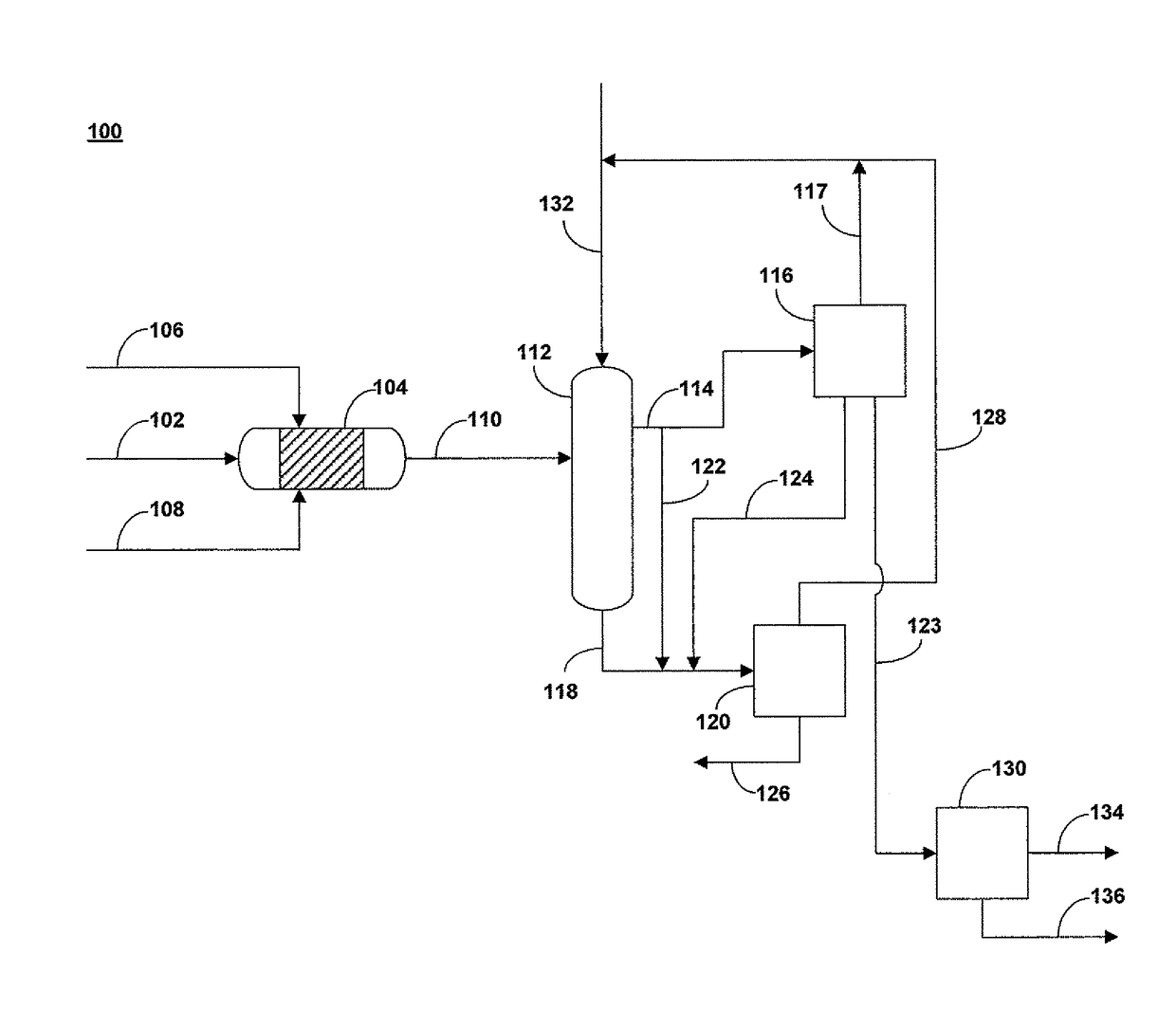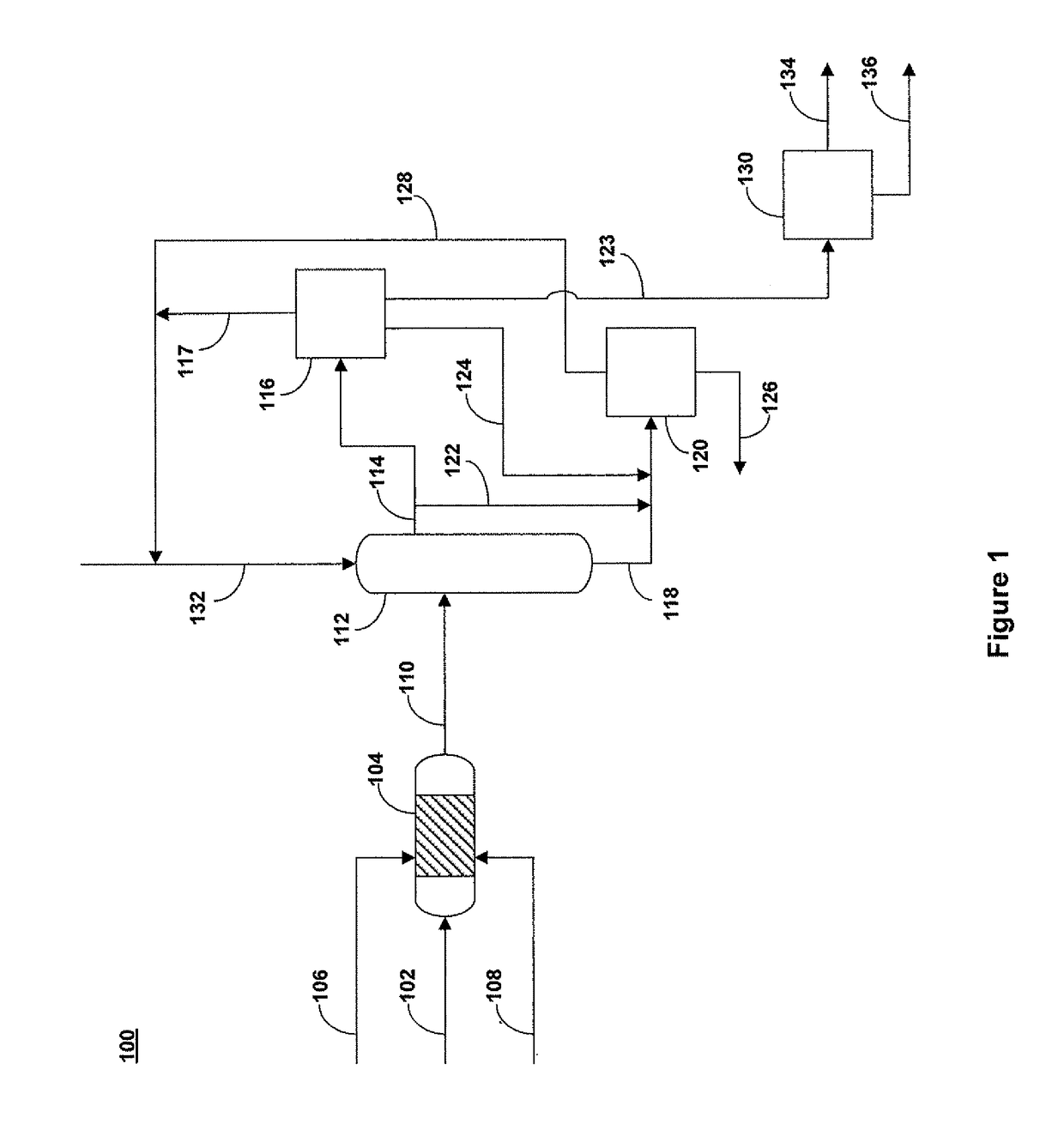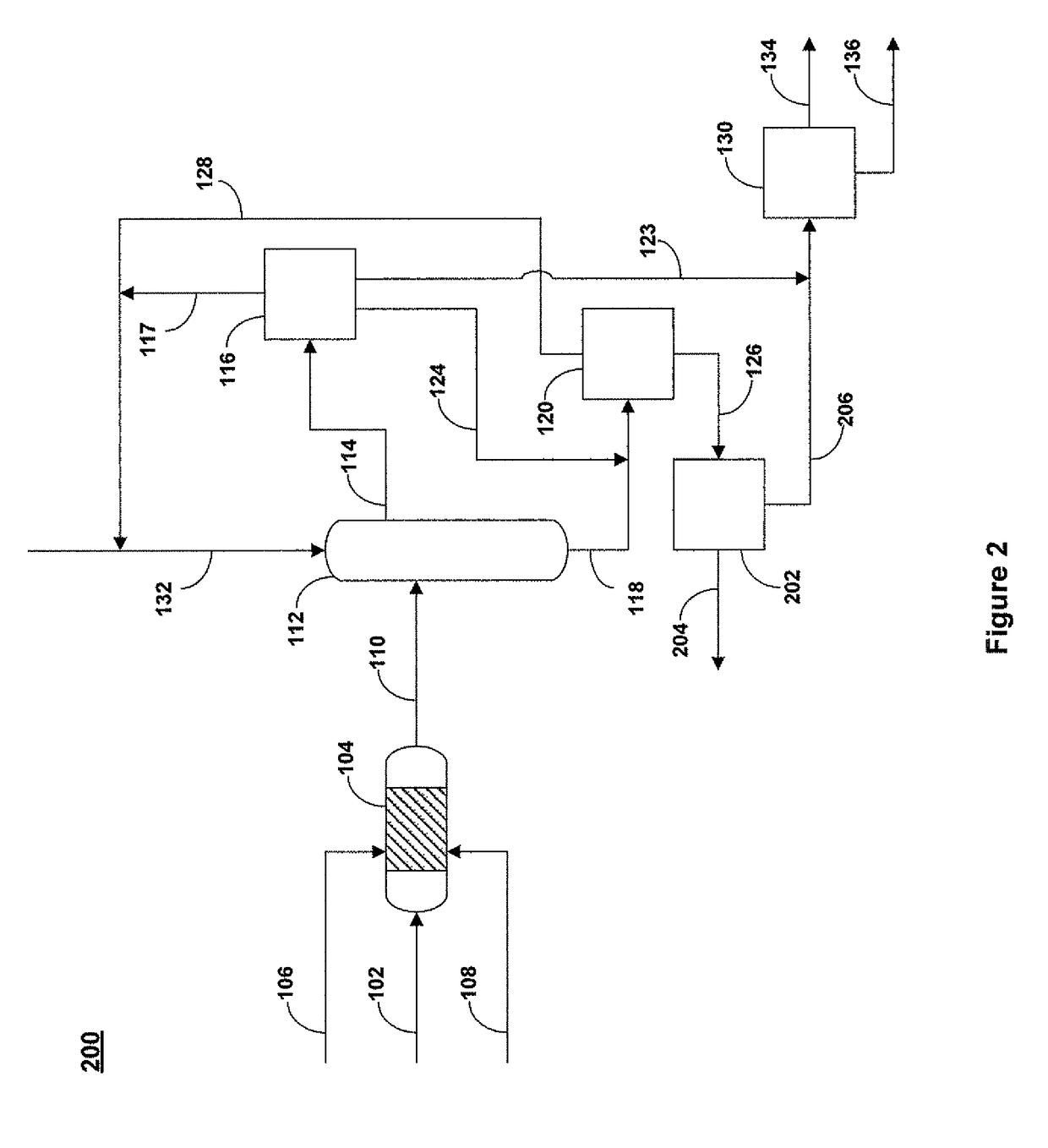Process for oxidative desulfurization and sulfone disposal using solvent deasphalting
a technology of sulfone and desulfurization, which is applied in the direction of chemistry apparatus and processes, working up pitch/asphalt/bitumen by selective extraction, sulfur compounds, etc., can solve the problems of high vapor pressure, high vapor pressure, and low oxygen content of most crude fuels, and achieve high purity.
- Summary
- Abstract
- Description
- Claims
- Application Information
AI Technical Summary
Benefits of technology
Problems solved by technology
Method used
Image
Examples
example
[0058]FIG. 3 shows one embodiment of the present invention. Diesel stream 302, which includes sulfur containing compounds, hydrogen peroxide oxidant stream 306 and catalyst stream 308, comprising acetic acid and Na2WO4 solid catalyst, were supplied to oxidation reactor 304, which was operated at conditions suitable to oxidize sulfur containing compounds present in the diesel stream, to produce oxidized sulfur containing diesel stream 310 and waste catalyst stream 311. Oxidation reactor 304 was maintained at a temperature of about 70° C. and a pressure of about 1 bar. The hydrogen peroxide to sulfur ratio was about 4:1, and the reactants were contacted for approximately 60 min. Oxidized sulfur containing diesel stream 310 is supplied to extraction vessel 312 where the diesel stream is contacted with methanol and heated to selectively remove the oxidized sulfur containing compounds from the diesel stream. Extraction vessel 312 is operated as described herein and produces extracted die...
PUM
| Property | Measurement | Unit |
|---|---|---|
| pressure | aaaaa | aaaaa |
| temperature | aaaaa | aaaaa |
| temperature | aaaaa | aaaaa |
Abstract
Description
Claims
Application Information
 Login to View More
Login to View More - R&D
- Intellectual Property
- Life Sciences
- Materials
- Tech Scout
- Unparalleled Data Quality
- Higher Quality Content
- 60% Fewer Hallucinations
Browse by: Latest US Patents, China's latest patents, Technical Efficacy Thesaurus, Application Domain, Technology Topic, Popular Technical Reports.
© 2025 PatSnap. All rights reserved.Legal|Privacy policy|Modern Slavery Act Transparency Statement|Sitemap|About US| Contact US: help@patsnap.com



